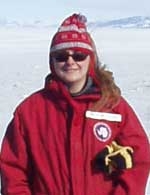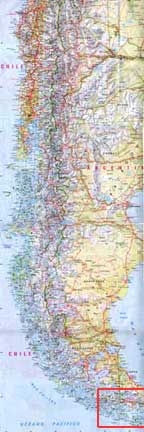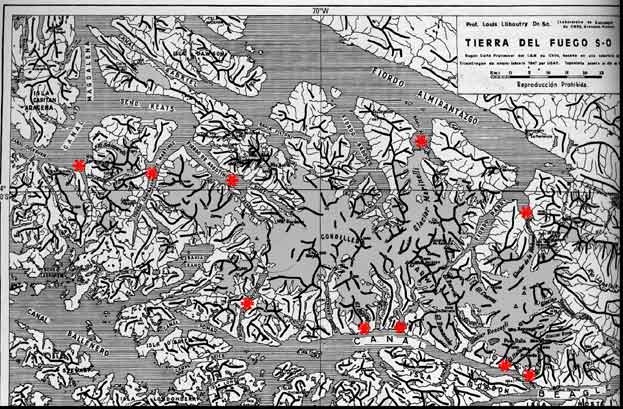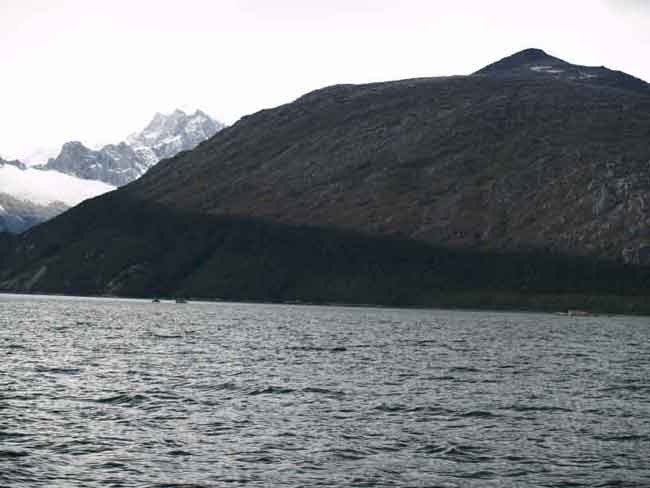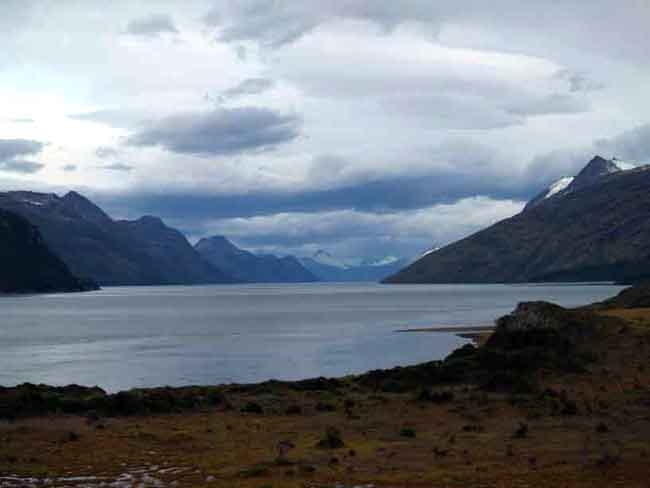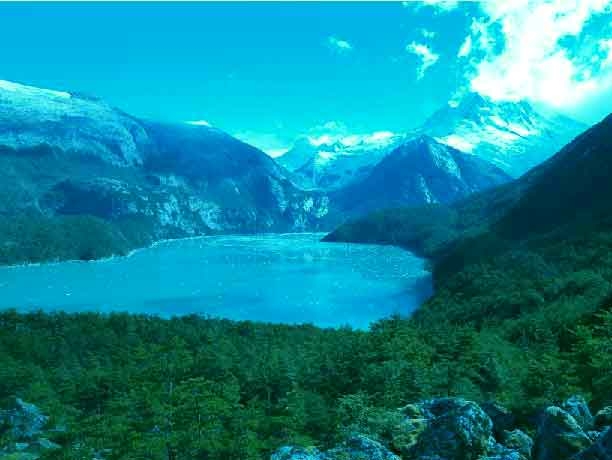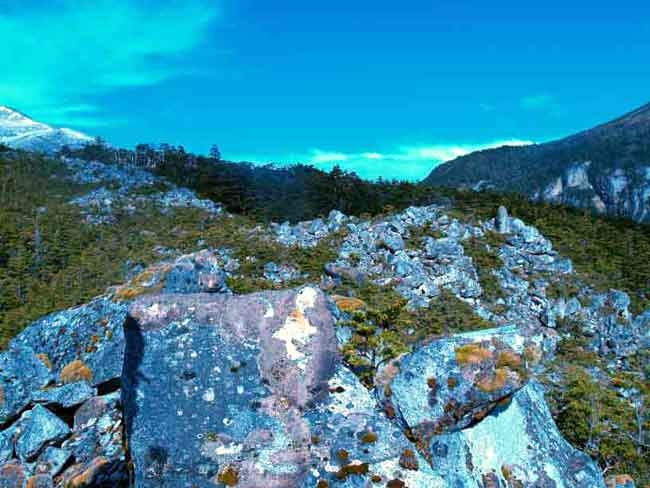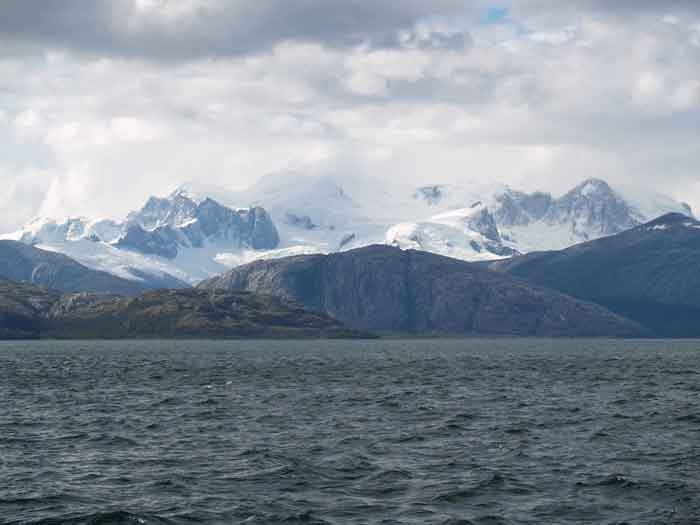Chronology of Late Holocene Moraines, Cordillera Darwin
Chronology of Late Holocene Moraines, Cordillera Darwin
Chronology of Late Holocene Moraines, Cordillera Darwin:
Implications for the Global Extent and Character of the Little Ice Age
Brenda Hall, University of Maine
and Charles Porter
Patagonia Research Foundation, and UMaine
March 1, 2006 to May 1, 2006
The Little Ice Age (LIA) is classically defined in the Swiss Alps as an interval of glacial expansion dating from about A.D. 1300 to A.D. 1854-1865 (Holzhauser et al., 2005). In Europe, this period is characterized by two prolonged episodes of glacial expansion separated by an interval of retreat in the early 1500s and followed by rapid recession beginning in 1850-1865. Two exceptions to this recent meltdown include short-lived periods of advance during the 1920s and 1970s/1980s. Both the overall cause of the LIA, as well as the reason for the anomalous 20th century advances, remain unknown.
In order to determine late Holocene ice extent in the Cordillera Darwin, we will map and date moraines at more than 10 key glaciers on both the south (wet) and north (dry) sides of the range (Figure below). These glaciers have been chosen because of previous reconnaissance, as well as photographs that document ice positions throughout the 20th century. We will map former ice extent first from air photographs and then in the field. Using these maps, as well as historical photographs, we will identify key moraines for dating. Dating will be accomplished in three ways. First, organic remains exposed in section within the moraines and trees killed by advancing ice will be sampled in order to bracket closely the timing of advance. Second, the ages of the oldest trees outside the moraines will be determined using an increment borer and ring-counting methods. These data will allow us to place limits on late Holocene ice extent. The third chronologic method will be to obtain cores from peat bogs in carefully selected locations just outside of the late Holocene moraine set. Basal ages from these cores also will afford limiting ages on glacial extent.
Because of the remoteness and inaccessibility of the area, our work requires a dedicated boat and an extended field season. C. Porter will lead the field team and organize the logistics. His preliminary work and extensive knowledge of the area will allow us to hone in on key sites quickly. He has the logistics (i.e., access to boats, crews, zodiacs, etc?) necessary for the work. In addition, he will carry out all of the post-field season tree-ring analysis at his tree-ring facility in Puerto Williams. He will be joined by B. Hall, who is experienced in glacial geologic mapping and radiocarbon dating. She will be responsible for producing detailed geomorphologic maps and for preparing samples for radiocarbon dating.
Chronology of Late Holocene Moraines, Cordillera Darwin Journal entries
Chronology of Late Holocene Moraines, Cordillera Darwin:
Implications for the Global Extent and Character of the Little Ice Age
Brenda Hall, University of Maine
and Charles Porter
Patagonia Research Foundation, and UMaine
March 1, 2006 to May 1, 2006
Brenda writes from Puerto Williams
| March 3rd to 6th | We left Puerto Williams the evening of the 3rd en route to our first destination, Pia, a fjord on the south side of the Cordillera Darwin.As we left late in the evening, we put into an anchorage only a couple hours or so from Puerto Williams. The next day, we got as far asVentisquero Holanda and an anchorage called Caleta Olla. Holanda Glacier is spectacular! It calves into a proglacial lake and there areplenty of moraines around. We plan to work here later in the trip. We took a look around at the moraines and also at a peat bog that we plan to core.
On the following day, we headed west along the Beagle Channel,for Pia, but had to change plans partway there. About an hour after leaving Caleta Olla, we ran into a pretty nasty squall, with low visibility and 60 knot headwinds. The seas started to get exciting. As the entrance to Pia is rather shallow, we decided to make for another anchorage, Caleta Mañana on the south side of the Beagle. There, things were pretty calm and we enjoyed some fish Juan cooked up for us. Finally, on the morning of the 6th, we entered Pia, which has to be one of the most beautiful places I’ve ever been. When entering the fjord,one immediately notices the moraines clinging to the fjord walls. How they can stay there is a mystery, because it is very steep. The moraine crosses the mouth of the fjord, and Charlie had to find just the right spot to take the boat across it. We anchored at a small cove in the west arm, a place that was to be our home for the next week. |
|---|---|
| March 7th to 14th
|
Brenda writes from Pia
We spent this week working in the area in and around Pia. There is so much to do here! The weather by and large has been cooperative. Some days are downright pleasant! Others are a little wet. The fjord itself has two arms, east and west, each with glaciers at the head. When we visited the head of our arm, we saw a lot of calving, an event roughly every ten seconds. At one point, a huge slab calved off and a big,curling wave went shooting across the cove. That was the point at which Charlie put the motor on full throttle and we raced the wave out of the cove. I suppose it would have flipped the zodiac had it caught us. We also are working at Oblique Glacier, which is located about an hour zodiac ride up the Beagle Channel. On a nice day, it is a pleasant trip. On a not so nice day, it can be downright nasty. Lucky for us,we’ve had mostly nice weather. We did get some fancy waves on our last trip home, which apparently were caused by a combination of the wind and the currents near the mouths of the fjords. Once we got back into Pia, however, things were pretty much calm. Oblique Glacier is neat because there is a whole sequence of moraines on land that we can date.We are using a combination of dendrochronology (for the youngest moraines) and radiometric (radiocarbon and cosmogenic exposure age)dating to obtain ages for the moraines. The other place we’re working here is on the spectacular Pia moraine.We have been collecting exposure age samples from a place called The Prow, where the moraine comes out of the forest. To get there, we have To claw our way 350 m nearly straight up from the water. Apparently,the right route is very important. We got the wrong one and it took us2 ½ hours of hauling ourselves up through the puckerbrush using ice axes to pull ourselves up. The forest is full of all sorts of dense,prickly, thorny bushes. The only consolation is that most of them produce edible berries. If we found ourselves stuck, we simply stopped and eat for awhile. Life could be worse! The view from the top was more than worth the exertion! |
| March 15 to 17 | Brenda writes from Puerto Williams
We have people coming aboard to do some hard-rock geology for ten days, so we needed to get back to Puerto Williams to pick them up. Onthe 15th and 16th we were once more anchored at Caleta Olla which had no fewer than five boats tied up in it one night! On the 15th, we walked the Holanda terminal moraine system from one end to another. It is an impressive composite moraine with a steep (and rapidly eroding) ice-proximal slope. We spent all of the next day coring a nearby bog and checking out sections along the river. On the 17th, we went back to Puerto Williams. |
| March 20-29th, 2006 | Brenda writes from Puerto Williams
We had some other geologists on board during this part of the trip. They were looking at bedrock geology and the formation of Cordillera Darwin. We continued our work at Pia and Holanda and got a look at Seno Garibaldi as well. The weather at Garibaldi was a little wet and it even snowed at sea level. But, when it cleared, it was spectacular! At Pia and Holanda, we continued our work mapping the moraines. It is fall now and the Nothofagus antarctica (beech) has turned a rusty orange. The contrast between it and the N. betuloides is very sharp because the latter is an evergreen and does not turn color. We’re back in Puerto Williams right now to drop off the other geologists and to stock up for our longer trip around to the north side of the mountains. Cheers, |


